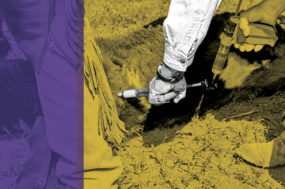Many producers in the southeast U.S. have made the switch to making baleage or using both hay and baleage as stored forage in their operations during the year. Baleage is harvested forage, which is ensiled at 40% to 60% moisture, with a target of 50% moisture.
Conserving forage in the form of baleage may reduce some risks associated with hay production. Baleage production requires less field dry downtime than hay, which helps producers buffer some against ever-changing weather conditions in the region. Because a shorter drydown window is needed, this increases the chances of harvesting forage at the right stage of maturity to optimize both quality and quantity. Thus, baleage can potentially serve as a high-quality stored forage in beef cattle diets.
As we move into the summer months, summer annual forages, such as crabgrass, pearl millet, sorghums and sorghum-sudangrasses, are a potential fit for baleage production. In most parts of the Southeast region, we are still in a good production window to consider the establishment of summer annuals as a supplemental forage in our operations. Ensiling of bales is most successful when both the target moisture and correct stage of maturity at harvest conditions are met.
Summer annuals are generally high in soluble sugars. These relatively available sugars help promote ensiling and preservation of bales through a rapid drop in pH in a given bale. This pH drop ultimately helps stabilize bale dry matter and quality during storage.
After baling, wrapping bales with a minimum of six layers of plastic will help preserve bale integrity and quality until the time of feeding in the winter months. Forage analysis can provide information on nutritive value and help determine if supplemental feedstuffs will be required to achieve animal production goals. Forage samples can be collected either right before wrapping bales or shortly before the time of feeding. During ensiling, there is very little change in the overall nutritional value of bales, making the timing of sampling more of a preference among producers. If samples are collected prior to feeding, which creates a hole in the plastic, tape back the hole to ensure that oxygen stays excluded from the bale.
Baling at the right moisture, wrapping shortly after baling and maintaining plastic integrity until feeding are keys to success in using baleage. Visit your local extension resources to review potential sources of information on making baleage in your area.








